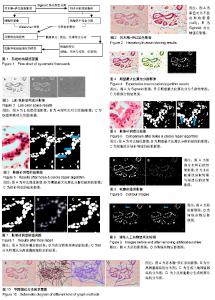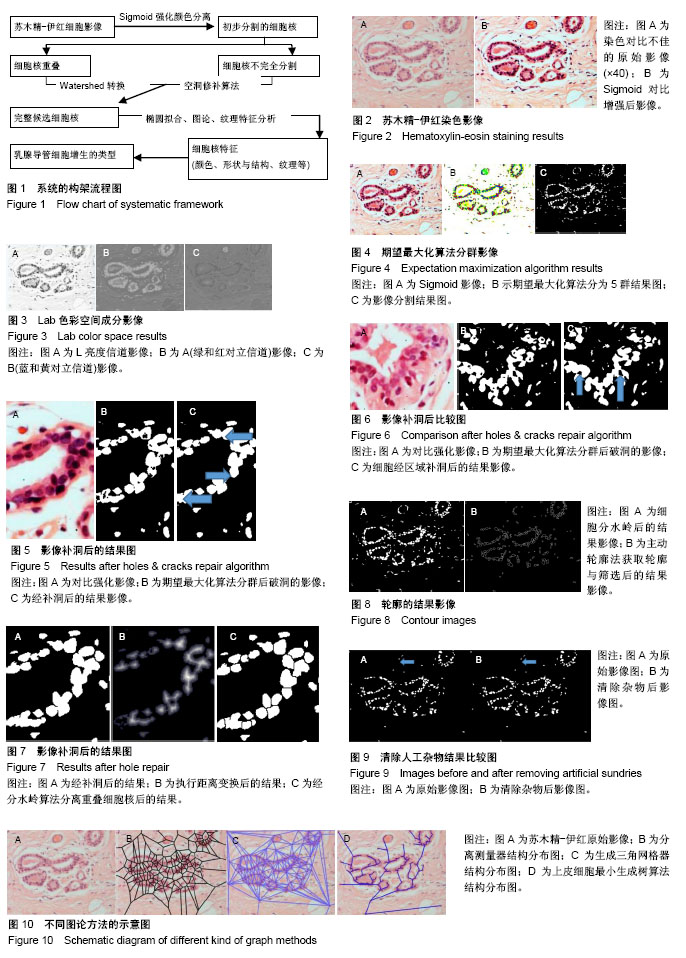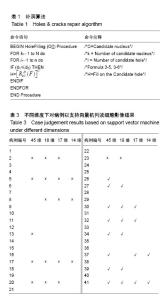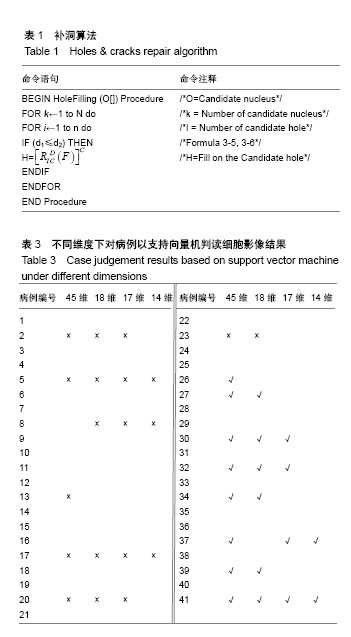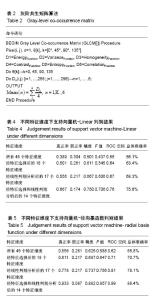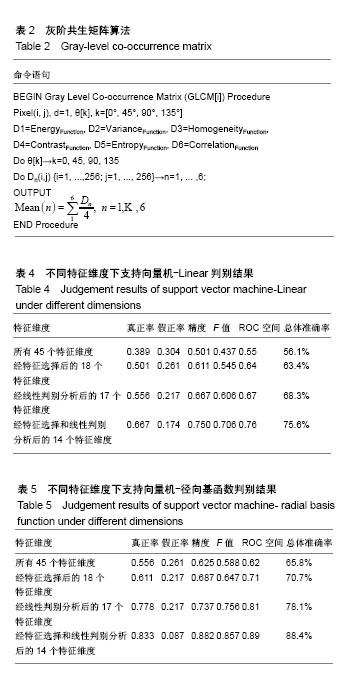| [1] Mba HS, Ms SKG, Edwin Silverberg BS, et al. Survival experience in the breast cancer detection demonstration project. Ca A Cancer J Clin. 1987;37(5):258-290. [2] 吕桂泉. 癌症不可怕: 30 年肿瘤诊治手记[M]. 杭州:浙江大学出版社, 2009.[3] Poller DN, Barth A, Slamon DJ, et al. Prognostic classification of breast ductal carcinoma-in-situ. Lancet. 1995;345(8958): 1154-1157.[4] 龚西騟. 有关乳腺导管上皮增生的几个问题[J]. 临床与实验病理学杂志, 1997,13(4):370-370. [5] 辛智芳. 乳腺增生症的分类和诊治[J]. 中华乳腺病杂志(电子版), 2008, 2(6): 45-48.[6] 许艳春,姚晓虹,祝明洁. 乳腺非典型性导管增生的研究进展[J]. 上海交通大学学报(医学版), 2013, 33(4):516-519.[7] Dundar MM, Badve S, Bilgin G, et al. Computerized Classification of Intraductal Breast Lesions Using Histopathological Images. IEEE Trans Biomed Eng. 2011;58(7):1977-1984.[8] Allison KH, Jensen KC. Intraductal Proliferations (DCIS, ADH, and UDH): A Comprehensive Guide to Core Needle Biopsies of the Breast. Springer International Publishing, 2016.[9] Allred DC, Mohsin SK, Fuqua SA. Histological and biological evolution of human premalignant breast disease. Endocr Relat Canc. 2001;8(1):47-61.[10] 杜辉,王树迎,徐淑敏. H.E.染色切片质量影响因素分析[J]. 中国兽医杂志,2003,39(12):50-51. [11] Moon WK, Lo CM, Cho N, et al. Computer-aided diagnosis of breast masses using quantified BI-RADS findings. Comput Methods Programs Biomed. 2013;111(1):84-92.[12] Basavanhally A, Ganesan S, Feldman M, et al. Multi-Field-of-View Framework for Distinguishing Tumor Grade in ER+ Breast Cancer From Entire Histopathology Slides. IEEE Trans Biomed Eng. 2013;60(8):2089-2099.[13] 江贵平,秦文健,周寿军,等. 医学图像分割及其发展现状[J]. 计算机学报,2015,38(6):1222-1242.[14] 缪仁拉,郑馨,江伟. 基于Lab 空间的白细胞图像偏色校正算法[J]. 电子世界,2017,39(15):153-153. [15] 蔡隽,鲍旭东,吴磊,等. 基于活动轮廓模型的彩色白细胞图像自动分割方法研究[J]. 生物医学工程研究, 2005,24(4):218-222. [16] 张艳玲,何鑫驰,李立. 基于最大类间方差与形态学的淋巴结图像分割[J]. 计算机科学,2013,40(8):296-299.[17] 杨俊,郑曲波,吴桂良,等. 基于 Metropolis-SA 算法的脑部磁共振血管造影图像分割[J]. 生物医学工程与临床, 2013, 17(2): 113-118. [18] 冯秀华,左玉霞,唐爱. 彩色多普勒检查乳腺疾病筛选早期乳癌的分析[J]. 医学影像学杂志,2003,13(6):399-401.[19] 王蜀,李永宁,陈楷民,等. 基于数学形态学的医学图像分割[J]. 计算机应用,2005,25(10):2381-2382. [20] 赵于前. 基于数学形态学的医学图像处理理论与方法研究[M]. 中南大学, 2006. [21] 夏剑峰. 基于数学形态学的癌细胞的分割与识别[J].电子科技, 2016, 29(10): 11. [22] 马东, 曹培杰. 分割重叠细胞核的方法及比较研究[J]. 北京生物医学工程, 1999, 18(3): 142-147.[23] Mouelhi A, Sayadi M, Fnaiech F, et al. Automatic image segmentation of nuclear stained breast tissue sections using color active contour model and an improved watershed method. Biomed Sign Proc Contr. 2013;8(5):421-436. [24] 胡彩亮. 基于指纹图的白细胞图像分割算法研究[D]. 燕山大学, 2011.[25] Vincent L, Soille P. Watersheds in Digital Spaces: An Efficient Algorithm Based on Immersion Simulations. IEEE Trans Patt Anal Mach Intell. 1991;13(6):583-598. [26] 廖苗,赵于前,曾业战,等. 基于支持向量机和椭圆拟合的细胞图像自动分割[J]. 浙江大学学报(工学版), 2017, 51(4):722-728. [27] 王康,李晓春. 基于多空间图像融合的白细胞自动分割[J]. 计算机仿真, 2015, 32(3): 258-262.[28] Caselles V, Kimmel R, Sapiro G. Geodesic active contours. Int J Comp Vis. 1997;22(1): 61-79.[29] Pham VT, Tran TT, Chiu YJ, et al. Region-aided Geodesic Active Contour model for image segmentation. IEEE International Conference on Computer Science and Information Technology. IEEE, 2010:318-321. [30] Aubert G, Barlaud M, Faugeras O, et al. Image segmentation using active contours: Calculus of variations or shape gradients? SIAM J Appl Math. 2003;63(6): 2128-2154. [31] Fatakdawala H, Xu J, Basavanhally A, et al. Expectation-maximization-driven geodesic active contour with overlap resolution (emagacor): Application to lymphocyte segmentation on breast cancer histopathology. IEEE Trans Biomed Eng. 2010;57(7):1676-1689. [32] 龚平,郭华雄,王文清,等. 基于人工神经网络的肺癌细胞形态学诊断模型的建立及应用[J]. 中华生物医学工程杂志, 2012,18(1):73-76.[33] 董敏,马义德. 基于乳腺肿瘤细胞形态特征参数的乳腺癌诊断发展研究[J]. 中华临床医师杂志:电子版, 2013, 7(11):5023-5026. [34] 龚西騟. 乳腺活检中热点问题的新认识(一)[J]. 临床与实验病理学杂志, 2005, 21(1):1-5. [35] 姜英,陈杰. 乳腺导管上皮内瘤变(DIN)[J]. 诊断病理学杂志, 2005, 12(6):463-466. [36] 马闪闪,董明利,张帆,等. 基于核主成分分析的流式细胞数据分群方法研究[J]. 生物医学工程学杂志, 2017,34(1):115-122. [37] 赵明珠. 细胞病理图像的特征分析与分类识别[D]. 浙江工业大学, 2012. [38] Soh LK, Tsatsoulis C. Texture analysis of SAR sea ice imagery using gray level co-occurrence matrices. IEEE Trans Geosc Rem Sens. 1999;37(2): 780-795.[39] Yu J. Texture Image Segmentation Based on Gaussian Mixture Models and Gray Level Co-occurrence Matrix[C]. International Symposium on Information Science and Engineering. IEEE, 2010:149-152. [40] 白雪冰,王克奇,王辉. 基于灰度共生矩阵的木材纹理分类方法的研究[J]. 哈尔滨工业大学学报, 2005, 37(12):1667-1670. |
